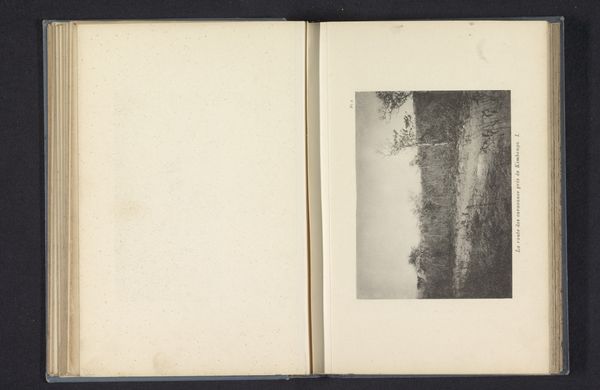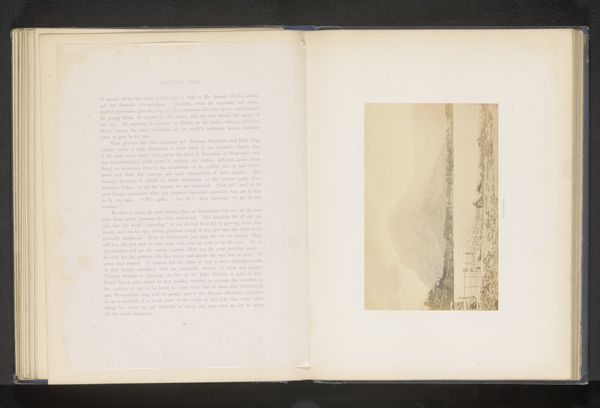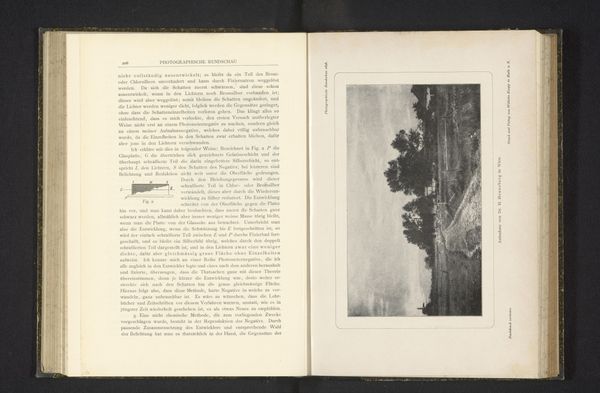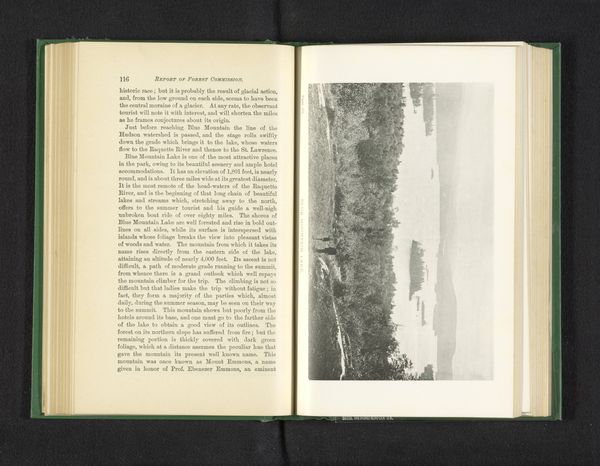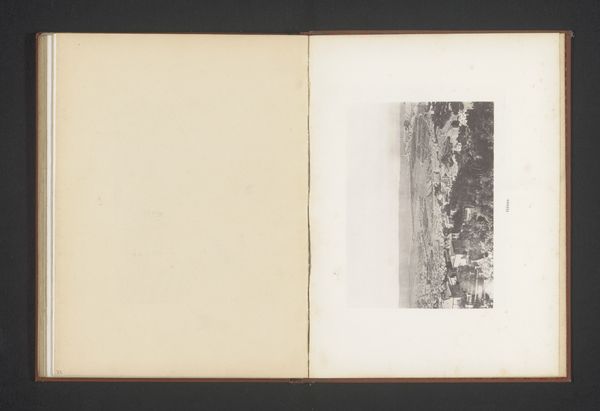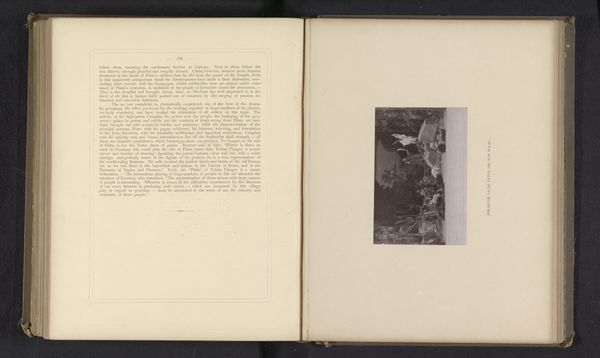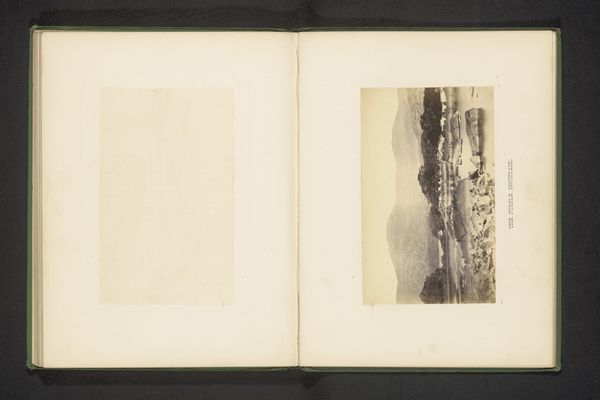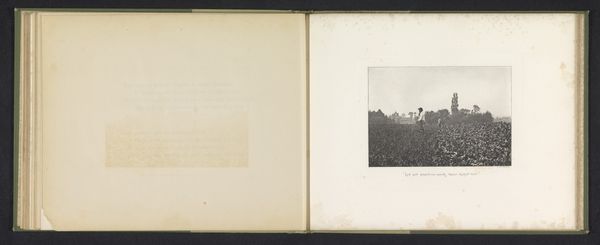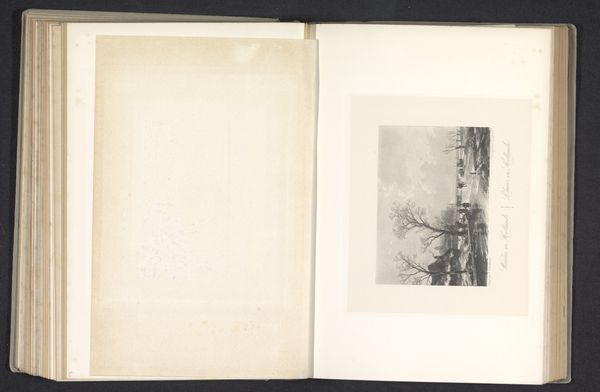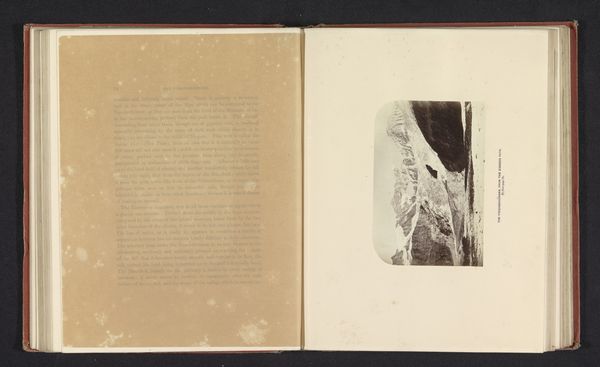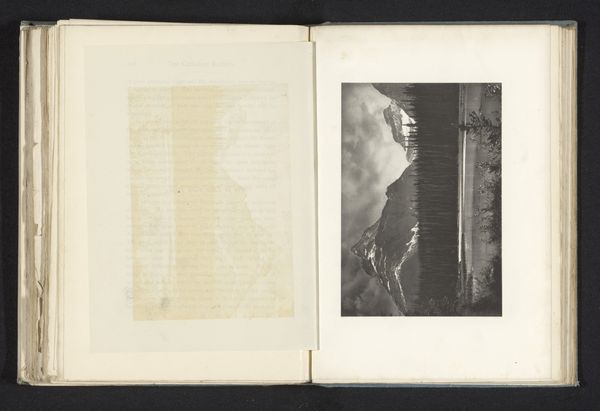
photography, albumen-print
#
portrait
#
landscape
#
photography
#
albumen-print
#
realism
Dimensions: height 120 mm, width 156 mm
Copyright: Rijks Museum: Open Domain
Curator: Before us we have Robert S. Redfield’s albumen print, "Landscape with a Woman and Trees," dating from before 1902. Editor: It's rather peaceful, isn't it? There's a woman sitting calmly beneath a sprawling tree; the image exudes quiet contemplation. I am intrigued by the albumen print’s materiality. Curator: Indeed. The choice of albumen printing is quite deliberate here, fitting the conventions of photographic realism popular at the time. The image would be carefully created within specific institutional expectations of pictorial landscapes and portraits. Editor: It's fascinating how the process itself shapes the image we see. Albumen prints, developed from egg whites, impart a distinct, almost dreamlike quality. It speaks to photography's then still burgeoning intersection with labor intensive craft traditions. Think of the production—gathering the materials, preparing the emulsion… Curator: And don't forget the wider cultural consumption of these images. Photography in this period played a crucial role in shaping perceptions of nature and leisure, popularizing ideas about landscape and ideal femininity for the rising middle class. It became a part of the era’s visual vernacular, didn’t it? Editor: Precisely. The photographic print's reproducibility and dissemination facilitated an idealized relationship with both nature and societal role, reflecting the material conditions of the era—industrial production, growing cities—even while presenting an idyllic alternative. Curator: Though at the time, not all viewers would be aware of that underlying tension. Instead, the work was shown through galleries, photographic societies, etc., which codified the value system around "artistic" photography versus snapshots and documentation. Editor: You know, when looking closer at the print itself, I see the wear of time reflected on the paper's surface. Curator: It acts almost as a time capsule for those social codes around art and gender. The woman situated centrally seems both at peace and enclosed. It shows her agency but also containment, socially-prescribed freedom for certain strata of that society. Editor: That is a vital perspective that reveals so much that casual appreciation would otherwise bury. The physical aging and deterioration further highlights those past meanings. Curator: Yes. Examining that dialogue between landscape, representation, and reception opens exciting avenues into history and our contemporary reinterpretation. Editor: Indeed, and pondering the tactile, process-heavy beginnings of photography can attune us to modern day means of image production.
Comments
No comments
Be the first to comment and join the conversation on the ultimate creative platform.
